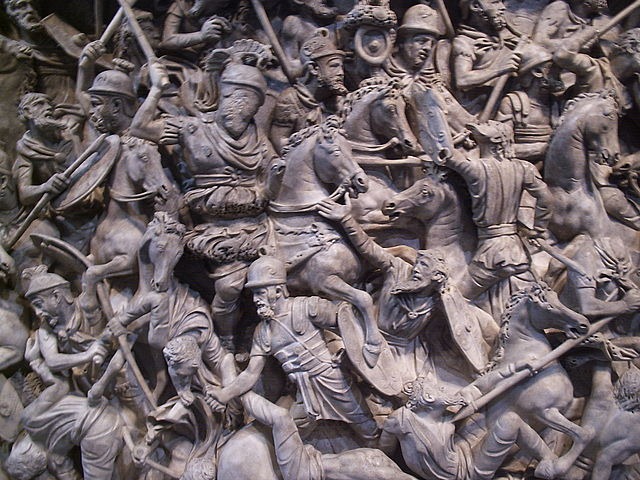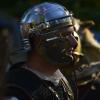-
Брой отговори
15757 -
Регистрация
-
Последен вход
-
Days Won
465
Content Type
Профили
Форуми
Библиотека
Articles
Блогове
ВСИЧКО ПУБЛИКУВАНО ОТ Last roman
-
големите нАучни изцепки за 2014 г.: http://offnews.bg/news/Наука_34/Топ-10-най-големи-гафове-в-науката-за-2014-първа-част_432909.html
-
Земята в цялата й прелест през погледа на МКС:
-
по римско време строяли инсули, достигащи дори 7-8 етажа /всичко над първия било дървено/. При съвременната техника на строителство не виждам нищо учудващо да има дървении на по 20-30 етажа.
-
На всички участници в тази многократно дъвкана тема желая: Bene valete in pacem Saturni!
-
думнаха го вече: http://dailycurrant.com/2014/12/24/russia-shoots-down-santas-sleigh-near-north-pole/
- 3 мнения
-
- 1
-

-
то ако си я направиш както трябва ще стане пълноценно жилище, па дори и римско
-
спокойно, по-голямата част от народа се придържа към традиционното строителство и в избора на жилище го дава строго консервативно, така че зелените къщички и занапред ще са приоритет на ентустиасти еколози с ограничени финансови възможности.
-
след като си изяхнихме трепетните спомени за прехваления бургаски плаж /честно казано лично аз предпочитам Средиземноморските плажове, но това е друга тема/, да се върнем малко към темата за шистовия балон:
-
да не минава само през горещите точки, че току виж го уцелила някоя ракета.
- 3 мнения
-
- 1
-

-
айде, нема нужда.
-
поради очевидната й абсурдност, темата заминава за алтернативния раздел! Весела Коледа!
-
Айде стига простотии и заяждания!
-
фосил на 300 милиона години доказа наличие на цветно зрение у примитивните риби: 300-Million-Year-Old Fossil Suggests Ancient Fish Could See in Color Fossilized rod and cone cells — the kinds that help people see — have been discovered for the first time, researchers say. The finding reveals that such eye cells have existed for at least 300 million years, and that the ancient fish they were discovered in likely saw in color, according to the study's scientists. Human vision depends on pigments that absorb light. These pigments lie inside cells known as rods and cones. Cones are sensitive to color and also help perceive fine detail and rapid changes. Rods are more sensitive to light than cones, but are not sensitive to color, and are responsible for peripheral and night vision. Both rods and cones are found in a layer of tissue in the back of the eye known as the retina. Fossilized Acanthodes bridgei with eye tissues intact. Myllokunmingia may be one of the earliest known creatures with a backbone, and this creature may have possessed a rudimentary cameralike eye, which suggests vision dates back at least 520 million years. However, much remains unknown about the evolution of vision, since the soft tissue of the eye usually decays rapidly after death. To learn more about the evolution of vision, scientists analyzed an exceptionally well-preserved 300-million-year-old fossil specimen of a fish called Acanthodes bridgei. The fossil was excavated from Kansas and is kept at the National Museum of Nature and Science in Tokyo. The fish, which reached up to about 4 inches (10 centimeters) long, is the last known common ancestor of modern jawed fishes, including fishes with bony skeletons, such as barracudas, and cartilage skeletons, such as sharks. http://www.nbcnews.com/science/science-news/300-million-year-old-fossil-suggests-ancient-fish-could-see-n273946
-
мисля че никой не отрича, че Т34 е най-успешният танк през ВСВ, но темата е за друго.
-
Как го правят по света: Amateur Fossil Hunter Discovered Complete, 7ft Skeleton Of Ancient Marine Reptile Whilst taking a stroll along a picturesque, rocky beach in south Wales, a computer programmer with a passion for fossil hunting stumbled upon a rather remarkable find: a 7-foot-long skeleton of an ancient, predatory reptile that swam our oceans from the Jurassic to the Cretaceous period. What’s more, experts believe that the specimen could be complete, making the rare discovery even more exciting. The fossil was found along Penarth beach, Glamorgan, which is the most popular spot in Wales for fossil collectors to fill their boots due to the abundance and rich variety of specimens so far unearthed here. Its discoverer was 34-year-old Jonathan Bow, who has had a keen interest in fossils for the best part of a decade now. He first noticed the skeleton after a small piece, around one inch in size, became exposed on a changing tide in September, BBC News reports. Bow and his brother then began the laborious task of uncovering the rest of the specimen, which took them around a day. During this process, the impressive size of the specimen became quickly apparent, which he eloquently described as a “whopper.” Then, the duo had to begin removing some of the vast amount stone that surrounded the fossil, which weighed some 60 kilograms (132lb) in total. After completing this extremely labor intensive process, Bow alerted the National Museum of Wales of the find, and it didn’t take long for paleontologists to recognize its potential importance given the remarkable preservation. The skeleton belonged to an ancient group of marine vertebrates called ichthyosaurs, which means “fish lizards.” So far, more than 80 different species of ichthyosaur have been described since their discovery in the early 19th century, but more are being added to the extensive list each year. These animals were not dinosaurs, but they did roam Earth’s oceans while dinosaurs ruled the land. They first appeared during the Triassic period, reaching peak diversity during the Jurassic, before dying out during the Cretaceous period- some 25 million years before dinosaurs were wiped out. Although there is a lot of controversy over what ichthyosaurs evolved from, the earliest versions had many lizard-like features, leading many to believe the land vertebrate they evolved from was probably a lizard of some kind. Early ichthyosaurs still possessed necks and also had long, slender bodies which probably meant that they weaved through the ocean much like modern day eels. These animals then rapidly diversified into a much more streamlined form with fish-like bodies and crescent-shaped tails, allowing them to cruise through the seas at impressive speeds. http://www.iflscience.com/plants-and-animals/complete-7ft-skeleton-ancient-marine-reptile-discovered-uk-beach
-
дека е алвата да прочете това
-
нема такава, бруте. Рядко визията на режисьора съвпада с това, което сме изградили при прочитането на една книга. Затова четете и ползвайте въображението си, което винаги ще си остане най-добрият сценарист
-
То всичко това хубаво, но при положение, че не знаем с точност дори годината на раждане на Исус /която разбира се е преди 4 г. пр. н. е./ какво остава и за останалите сведения от живота му.
-
темата по принцип е за един конкретен филм по конкретна книга. Да я не размиваме с това какво бихме искали или не искали да гледаме в обозримо бъдеще. Просто си кажете си мнението за екранизацията Хобит-а.
-
честно казано въпреки изпипаните ефекти, зрелищния край на Смог и внушителната битка на 5-те армии /която обаче беше доста нелогична на моменти/, нещо ми се видя повърхностен филма. Не ме трогна много изкушението на Торин, а за нещастната развръзка на джуджеско-елфска любов... абе смех си беше направо. Иначе както винаги каскадите на Леголас си бяха от рода: 'е нема такива изпълнения'. На тоя фон предните две части май не са толкова лоши.
-
туй се прави, за да е по-куул
-
Weighing up the evidence for the ‘Historical Jesus’ http://theconversation.com/weighing-up-the-evidence-for-the-historical-jesus-35319
-
Става нещо като Цари Мали Град и Перистера. Но теренът ще е як за възстановка.
-
Довечера ще го гледам, стига спойлил.


